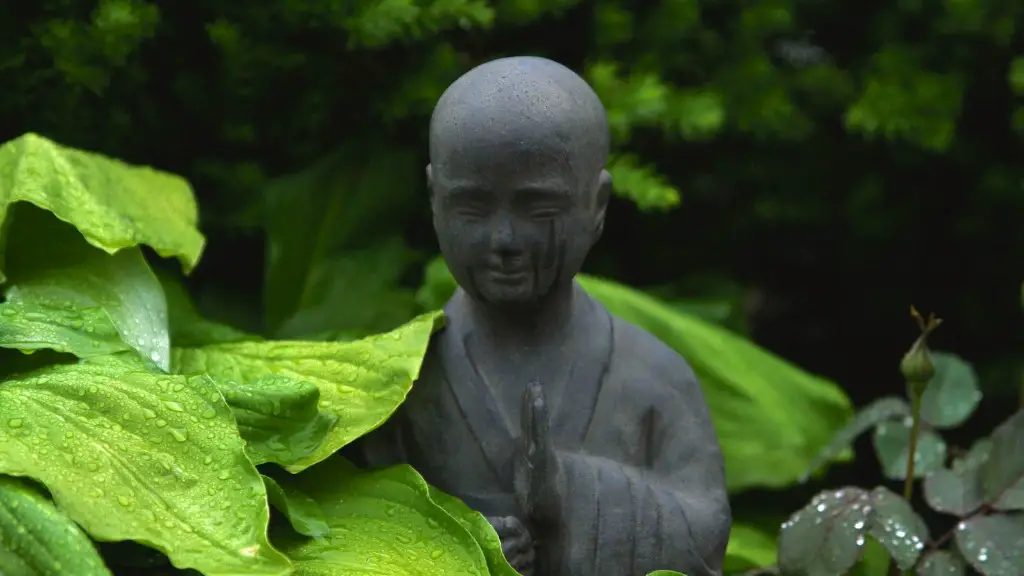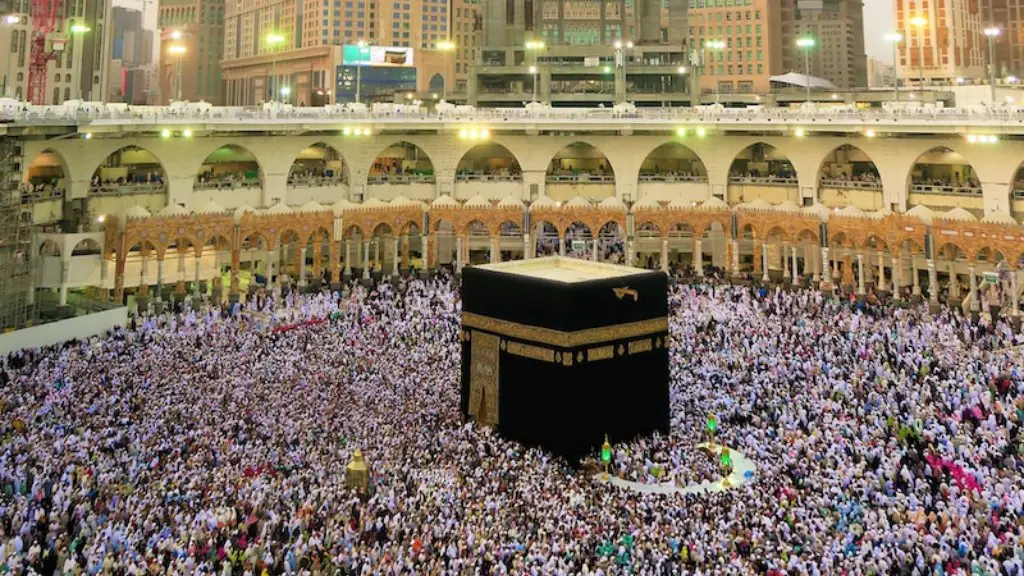What Is A Haggadah In Judaism?
A Haggadah is a Jewish text, which is used to narrate the story of the Exodus from Egypt during the Passover feast. It tells the tale of the Jewish people’s liberation from slavery in ancient Egypt and is used to represent the freedom from bondage and oppression. It is traditionally recited at a Seder, an important ritual held on the first night of Passover, in which families come together to celebrate their freedom. The Haggadah has become an important part of Jewish culture and is widely studied in Jewish communities around the world.
The Haggadah is believed to be based on ancient Biblical texts, and has been elaborated on over the years. It consists of a mixture of Bible readings, psalms, midrashic and rabbinical tales, rabbinical commentary, rituals and songs. Although the content of the Haggadah is widely understood, there has been a tradition of varying interpretations of the text, each tailored to a particular Jewish community.
The Passover Seder is where the Haggadah comes alive. During the Seder, the Haggadah is read aloud in a mix of Hebrew and Aramaic, as participants listen while eating and drinking. The Haggadah is also accompanied by rituals and songs – as the story is read out, each participant takes part in a variety of symbolic gestures, such as dipping vegetables in saltwater and blessing the cup of Elijah.
The Haggadah serves as a reminder of Jewish redemption and collective identity for the Jewish people, and is an important example of the power of storytelling to unite a population by its shared story. Moreover, the Haggadah is seen as a mark of continuity, representing a Jewish link to the ancient past that is still alive today.
Jewish scholars, rabbis and teachers continue to interpret the Haggadah in innovative ways, often in order to bring attention to contemporary issues and to add relevance to the ancient stories. For example, Rabbi Arnold Rachlis from California, has recently written a Haggadah that focuses on giving voice to the ‘other’ – those who are normally excluded from conservative Jewish practice, such as single parents, ethnic minorities and people with disabilities.
Moral Values Of The Haggadah
The Haggadah not only tells the story of the Exodus from Egypt, but it also conveys moral values to its readers. It contains numerous references to hospitality, justice and humility – themes which are treated as matters of high importance. Hospitality, or ‘hachnasat orchim’, is celebrated in the Haggadah as a virtue which should never be taken for granted, as it has been a value which has been consistently underplayed in Jewish history. Justice, or ‘tzedakah’, has been a fundamental principle within the Talmudic teachings, and is used to support questions of halakhah (Jewish law). And humility, or ‘anavah’, is seen as a key Jewish value which is embedded in the Haggadah to remind us of the importance of humility before one’s Maker.
Jews also study the Haggadah to gain spiritual insight, and to deepen their understanding of the Seder’s rituals. The Haggadah is often studied as a source of homiletic teachings and ethical teachings, and is seen as a way to bring the Passover narrative closer to those participating in the Seder.
Finally, the Haggadah serves as a reminder of Jewish resilience in the face of oppression and injustice, and as a message to never take freedom for granted. It is a symbol of how Judaism has been able to rearticulate itself in response to changing cultural and social conditions, and of its survival against all odds.
Modern Variations Of The Haggadah
Over the centuries, the Haggadah has been adapted in response to modern trends. For example, progressive Haggadahs have emerged that emphasize social justice, the rights of the oppressed, and the importance of solidarity between people of different faiths. Feminist Haggadahs have also been created, drawing attention to the exclusion of women’s voices in Jewish history.
The Haggadah has even been reproduced as a hip-hop musical, named ‘AfroHaggadah’, which tells the Passover story while addressing contemporary issues such as racism. This up-to-date version of the Haggadah has been praised for its ability to integrate diverse cultural experiences while keeping the core of the Haggadah’s values intact.
Today, there is a wide range of Haggadahs available, ranging in content and tone, which allow for a personalised experience. Each Haggadah brings its own interpretations to the table, allowing its readers to choose whichever version is most suitable for them. No matter which version is chosen, the timeless message of the Haggadah remains intact, with Jews hearing its message of freedom, justice and liberation for generations to come.
Production Of The Haggadah
The first printed edition of the Haggadah was published in 1486 in Soncino, Italy and was edited by renowned printing press owner Gershom Soncino. Since then, the Haggadah has been printed, translated and reproduced numerous times, in Hebrew, Yiddish, Ladino and English, and thanks to the spread of printing technology, is now available to anyone, anywhere in the world.
In recent years, there has been an increase in the demand for Haggadahs that feature modern designs and varied content. For example, the Haggadah created by graphic designer Oded Ezer features a minimalist design that combines traditional and contemporary elements, while illustrator David M. Krauthamer has created a Haggadah which uses bold illustrations to enliven the traditional narrative.
With modern design and new stories, the Haggadah can be experienced in a variety of different ways. The traditional text has been reimagined with new illustrations and interpretations, making it accessible to a wider audience, while remaining true to its core values.
Commemoration Of The Haggadah
Each year on the 14th of Nisan, the Haggadah is commemorated in a special ceremony known as the “Haggadah Festival”. This festival marks the first day of Passover and is seen as a way to celebrate the Haggadah’s role in transmitting the story of the Exodus from generation to generation. During the festival, the traditional Haggadah is read in the Jewish synagogues, and various film screenings, lectures, and seminars about the Haggadah take place.
The Haggadah is also remembered on the day before Passover, when Jews traditionally spend a day of preparation for the Seder. This is done in a number of ways, including prayers, songs, and stories. The primary focus of this day is the thorough cleaning of the house to rid it of all signs of the leavened bread forbidden during Passover. This is known as the ‘Burning of the Chametz’, and is an important part of the preparations for the Passover Seder.
The Haggadah is a living document, and it continues to be reimagined and reinterpreted by contemporary Jewish communities. Its potential as a vehicle for Jewish liberation, as a testament to Jewish resilience and as a source of moral teachings, will continue to make it an integral part of Jewish life for generations to come.
Social Relevance Of The Haggadah
The Haggadah plays an important role in our modern-day understanding of social justice and oppression. As such, it is particularly relevant in today’s political climate, with its accounts of liberation from slavery and oppression being seen as models of hope and solidarity for those who are facing oppression in the current day. It also serves as a reminder of our collective responsibility to fight for justice and equality for all people. Additionally, the Haggadah can be used as a teaching tool to educate people about Jewish history, and to introduce the concept of religious toleration.
In the past few years, there has been a surge of interest in the Haggadah as a powerful tool for teaching social justice. Several Haggadah projects have been launched, including an activist-oriented Haggadah by educator Noam Sienna, which features stories and activities that are intended to help participants think critically about current social issues. There have also been several initiatives to translate traditional Haggadahs into contemporary languages, in order to make them more accessible to a wider range of audiences.
The Haggadah’s messages of liberation and justice remain relevant today, and its power to inspire those facing oppression has not diminished. Its stories of resilience, solidarity and moral courage continue to resonate with the modern-day struggle for justice and equality, and serve as a reminder of our shared responsibility to work for a better world.
Conclusion Of The Haggadah
In conclusion, the Haggadah is a powerful Jewish text that has been used for more than five hundred years to share the stories of Jewish liberation and identity. It is a text which has been reinterpreted and reimagined in response to modern trends, and which serves as a reminder of our collective responsibility to fight for justice and equality. The Haggadah resonates with the modern-day struggle for freedom, and should not be taken for granted.



